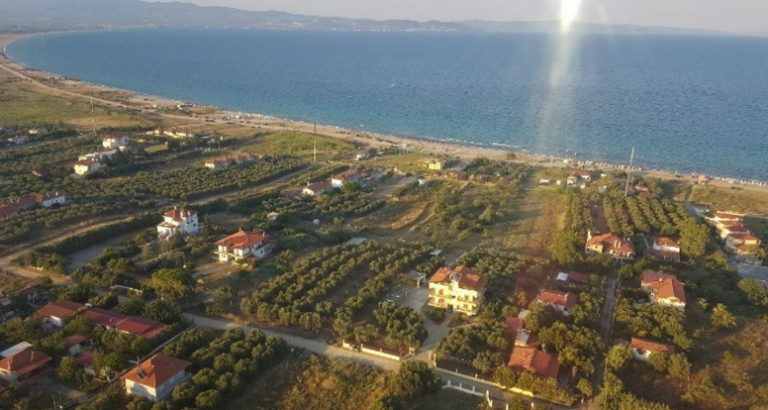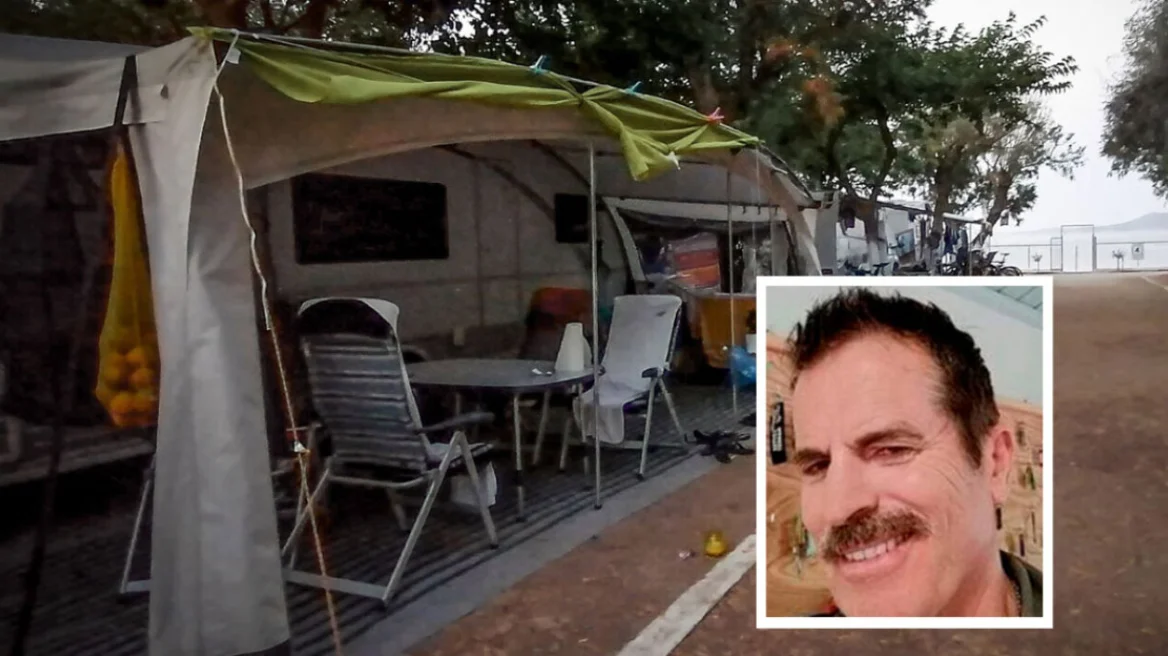For years, seawater has been “devouring” the freshwater in Halkidiki, and this isn’t due solely to a natural phenomenon. The region, which already faces water supply issues for various reasons, as was made clear recently with the prolonged water supply interruption in Pefkohori, is increasingly dealing with the “beast” of salinization. This phenomenon is related to the overextraction of water in coastal areas to meet agricultural needs, but also, to a lesser extent, those of tourism and residential development. The problem is multifactorial. Thousands of wells, both legal and illegal, operate “at full capacity” during the summer months. It is also a well-known secret that the land in Halkidiki has been “ploughed” for decades by illegal networks built by private individuals, which transport water from wells over kilometers, although the law allows its transport up to a maximum distance of 800 meters. The irrational use of water, coupled with the climate crisis, which has lowered the groundwater level in many areas by as much as 10 meters, approximately the height of a four-story building, also contributes to the phenomenon of salinization.
How does the drop in groundwater levels relate to salinization? Simply put, freshwater acts as a kind of “barrier” to seawater. When the level drops significantly, seawater penetrates inland because this barrier “falls” as the natural hydraulic gradient reverses towards the sea. The problem is not new, but it has worsened in recent years.
“We have been dealing with salinization for years. The rapid development of intensive olive cultivation in our area, especially after the late 1990s, combined with the lack of rainfall and prolonged heatwaves that increase irrigation needs, exacerbates the problem,” says the mayor of Polygyros, Georgios Emmanouil, to the APE-MPE, explaining: “The city of Polygyros was supplied with water from the plain in Kalyves, which are near the Olynthios river. However, in the last 20 years, olive cultivation has been continuously expanding, and thousands of new trees are planted each year, consequently increasing irrigation needs. Meanwhile, water is illegally transported from wells over very long distances, even kilometers, for field irrigation. A stable well with a yield of 10 cubic meters can irrigate 100 acres, while one with 100 cubic meters can irrigate 1,000 acres. When there is excess water, it is transported elsewhere. Legally, it can be transported up to a distance of 800 meters, but it is a well-known practice for decades that water often travels kilometers through illegal networks built by private individuals.”
While illegal wells are obviously condemnable (the exact number remains unknown), the continuation of olive cultivation in Halkidiki is undoubtedly necessary. “We cannot stand against farmers and shoot them down. Instead, serious investments in smart agriculture are needed, which can reduce unnecessary water waste, as well as more rational water use, such as drip irrigation instead of sprinklers, where a large part of the water evaporates, and irrigation based on the specific needs of each crop rather than uniformly,” notes the mayor of Polygyros, pointing out that in his area, the agricultural sector currently absorbs 90% of the water, compared to up to 10% for tourism and residents together (though tourism and residents demand very high-quality, potable water, unlike the primary sector).
According to Mr. Emmanouil, a holistic approach is needed, such as using water from wastewater treatment plants for irrigation after processing, creating a water reservoir, which of course requires the necessary biological treatment projects, many of which are still missing, and creating the sewage networks to connect with the biological treatment plants (which are also missing in many areas). Additionally, the water supply networks need to be modernized, which in the coastal area of Polygyros are over 50 years old in some cases, resulting in at least 40% of the water being lost due to leaks from old age and making water theft easy. However, all these require significant funding, which is not always easy to obtain for various reasons.
The Desired “Peaceful Rain” and Water Flows Greece Does Not Control
The problem of salinization is extensive throughout Greece due to its long coastline, says the emeritus professor of the Department of Civil Engineering at Aristotle University of Thessaloniki (AUTH), Konstantinos Katsifarakis. The problem, which is evident in almost all islands, even in Crete, primarily affects groundwater but also involves salty infiltration at river mouths. Except for areas like Halkidiki and Pieria, where agriculture and tourism often coexist by the sea, the problem of salinization is not particularly related to agriculture. “It mainly has to do with tourism, due to the temporal and spatial concentration of water consumption, four months a year, in specific areas, but also with residential development in these areas. In some cases, such as in Northeastern Halkidiki, mining activities also play a role, as they too require a lot of water,” the professor explains.
How does salinization relate to the drop in groundwater levels? “They are absolutely interconnected because for seawater to penetrate inland, there must be no ‘barrier’ of freshwater. So if the level drops, the sea ‘enters.’ And climate change certainly affects this. We have long periods of drought, but also intense rainfall causing flood phenomena – last year in Volos, as much water fell in two days as in a year, but what good is that water? – while what the groundwater needs to replenish is ‘peaceful rain,’ gentle rainfall,” he notes. Today, in some areas of Northern Greece, the water level has dropped over 10 meters, while in areas of Thessaly, it is much more, something that has not been uncommon in recent years, the professor observes.
When asked about the estimated annual water deficit in Northern Greece, Mr. Katsifarakis explains that we cannot talk about a deficit throughout the year, as the problem is spatially and temporally localized (in specific areas with many tourist arrivals and during the months of high demand in the tourist season). Besides the spatial and temporal concentration, the problem is also related to the fact that Greece does not “control” many of its water “conduits.” Except for Aoos, which originates in Greece and continues its water course in Albania, all other transboundary rivers crossing Northern Greece come from other countries. As a result, Greece depends on how neighboring countries manage the river waters. Specifically for Thessaloniki, Mr. Katsifarakis notes that although the sea has long infiltrated the underground of buildings near the sea (e.g., on Nikis Avenue), it makes no sense to talk about salinization in the urban fabric. Thessaloniki is supplied by the Aliakmonas and Aravissos rivers, and there are wells only in a few fields in the city.
Natural Decontamination Takes Months or Even Years
Salinization is considered pollution because once salt infiltrates freshwater, it can no longer be used by humans for most usual purposes. How easy is it to decontaminate it? “Natural decontamination is a time-consuming process because it takes months or even years for the freshwater level to rise. In the case of desalination, the issue is not time but energy expenditure. Even for decontamination through reverse osmosis, a lot of energy is needed to obtain clean water,” Mr. Katsifarakis points out. More feasible, he believes, are preventive measures, such as recharging the groundwater with stored water through small dams, “as the great Manolis Glezos did in Aperathos of Naxos.” Additionally, in coastal areas where new tourist developments are emerging, some simple yet significant measures could be implemented, such as installing a dual water system to use brackish or saltwater specifically for toilets, something already successfully applied in some other countries. “It is also necessary to improve legislation to better define the responsibilities of agencies and organizations, as today there are many responsible for the same issue, which is not effective,” the professor concludes.
Ask me anything
Explore related questions





